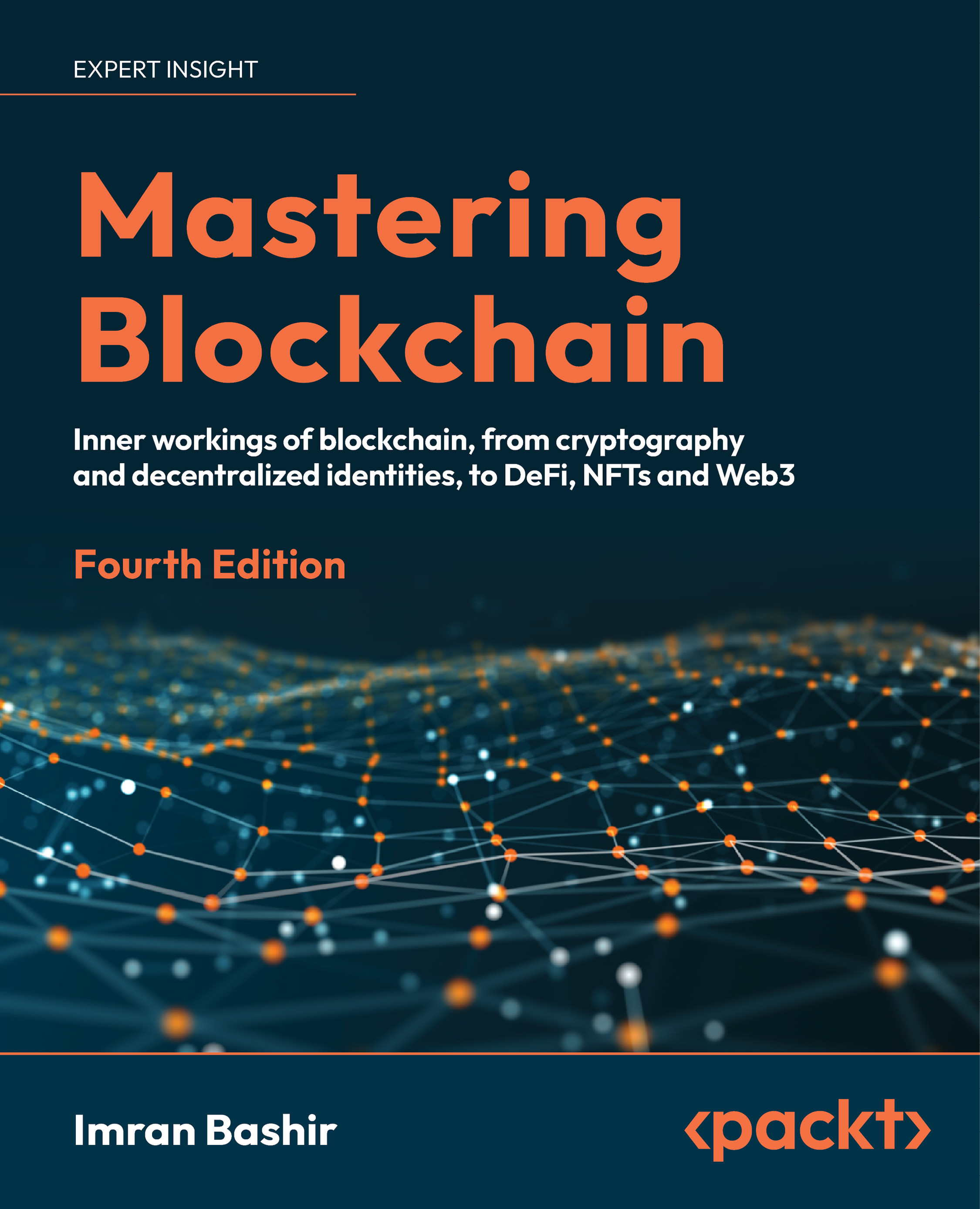Overview of this book
Blockchain is the backbone of cryptocurrencies, it has had a massive impact in many sectors, including finance, supply chains, healthcare, government, and media. It’s also being used for cutting edge technologies such as AI and IoT. This new edition is thoroughly revised to offer a practical approach to using Ethereum, Hyperledger, Fabric, and Corda with step-by-step tutorials and real-world use-cases to help you understand everything you need to know about blockchain development and implementation. With new chapters on Decentralized Finance and solving privacy, identity, and security issues, as well as bonus online content exploring alternative blockchains, this is an unmissable read for everyone who wants to gain a deep understanding of blockchain.
The book doesn’t shy away from advanced topics and practical expertise, such as decentralized application (DApp) development using smart contracts and oracles, and emerging trends in the blockchain space. Throughout the book, you’ll explore blockchain solutions beyond cryptocurrencies, such as the IoT with blockchain, enterprise blockchains, and tokenization, and gain insight into the future scope of this fascinating and disruptive technology.
By the end of this blockchain book, you will have gained a thorough comprehension of the various facets of blockchain and understand the potential of this technology in diverse real-world scenarios.



 Free Chapter
Free Chapter
